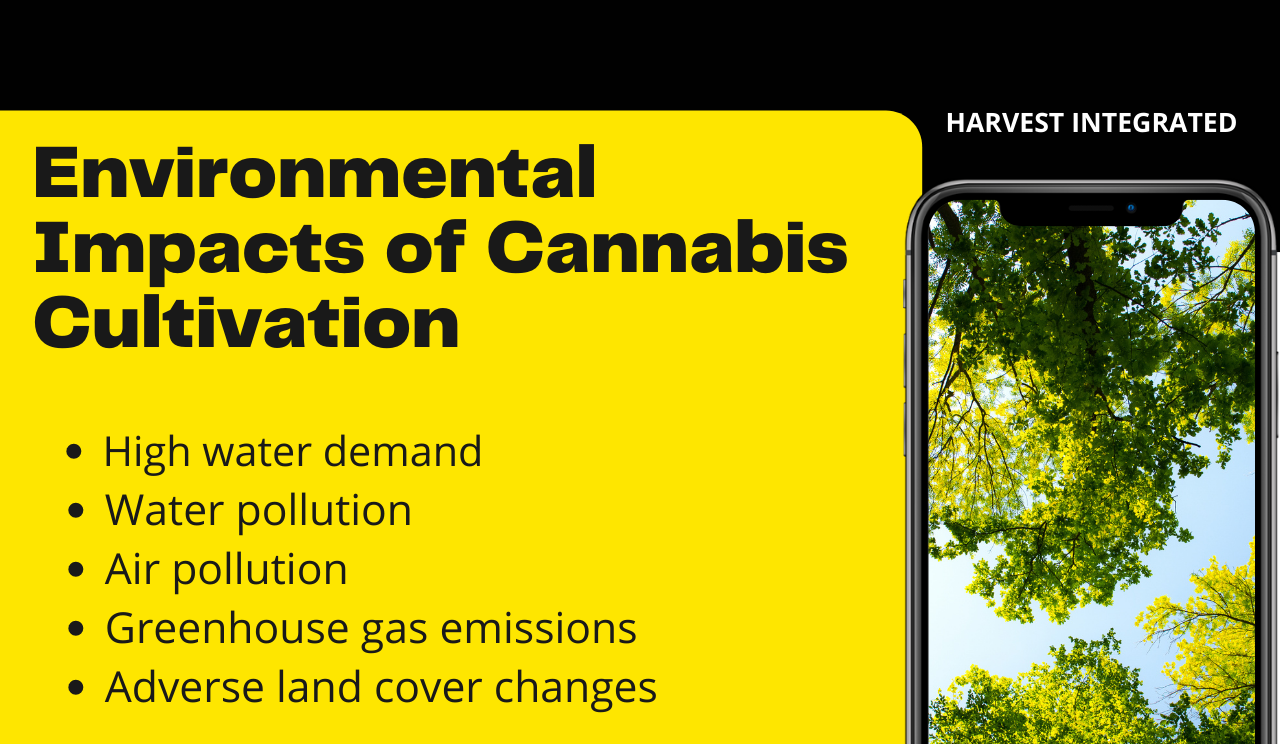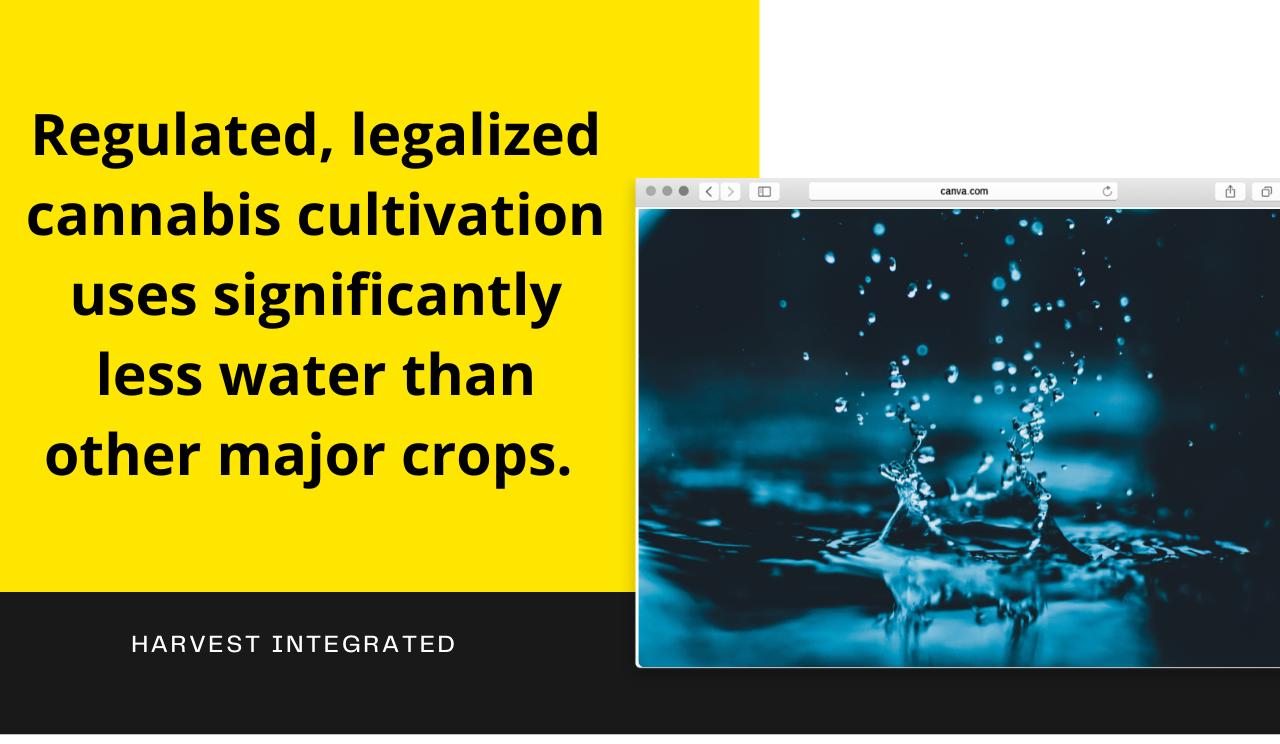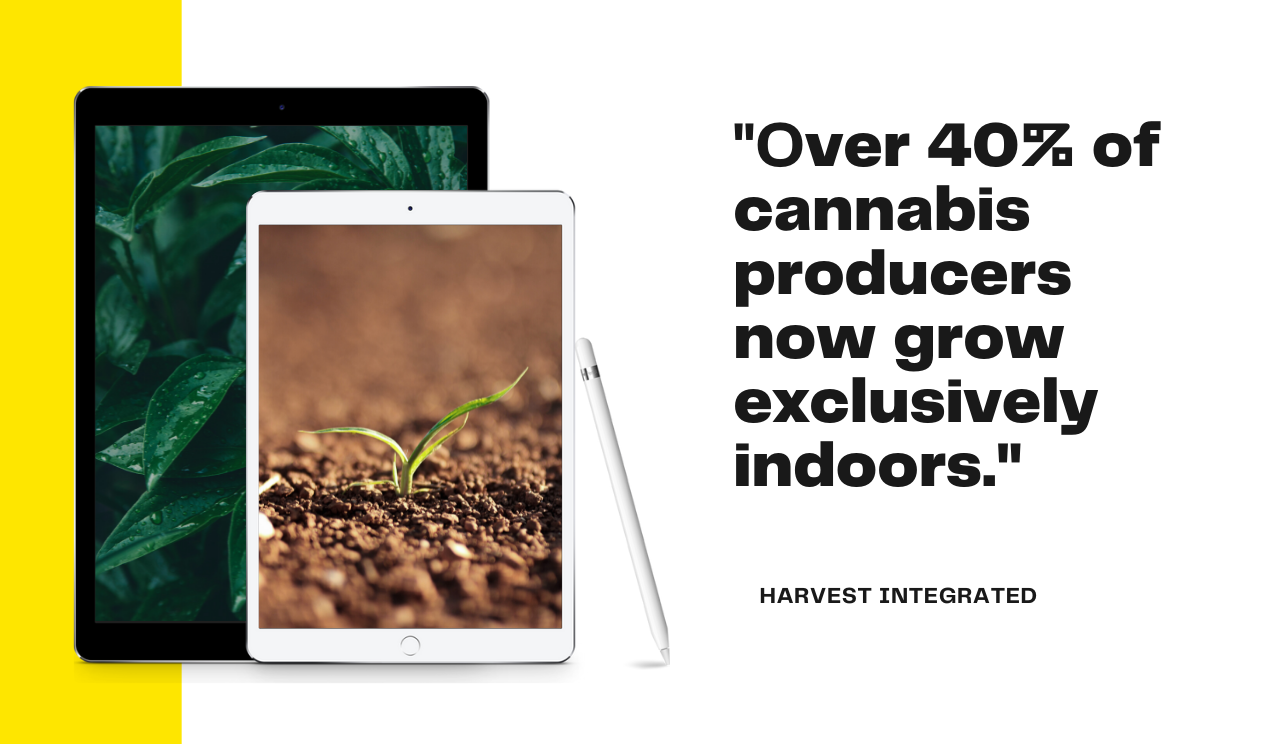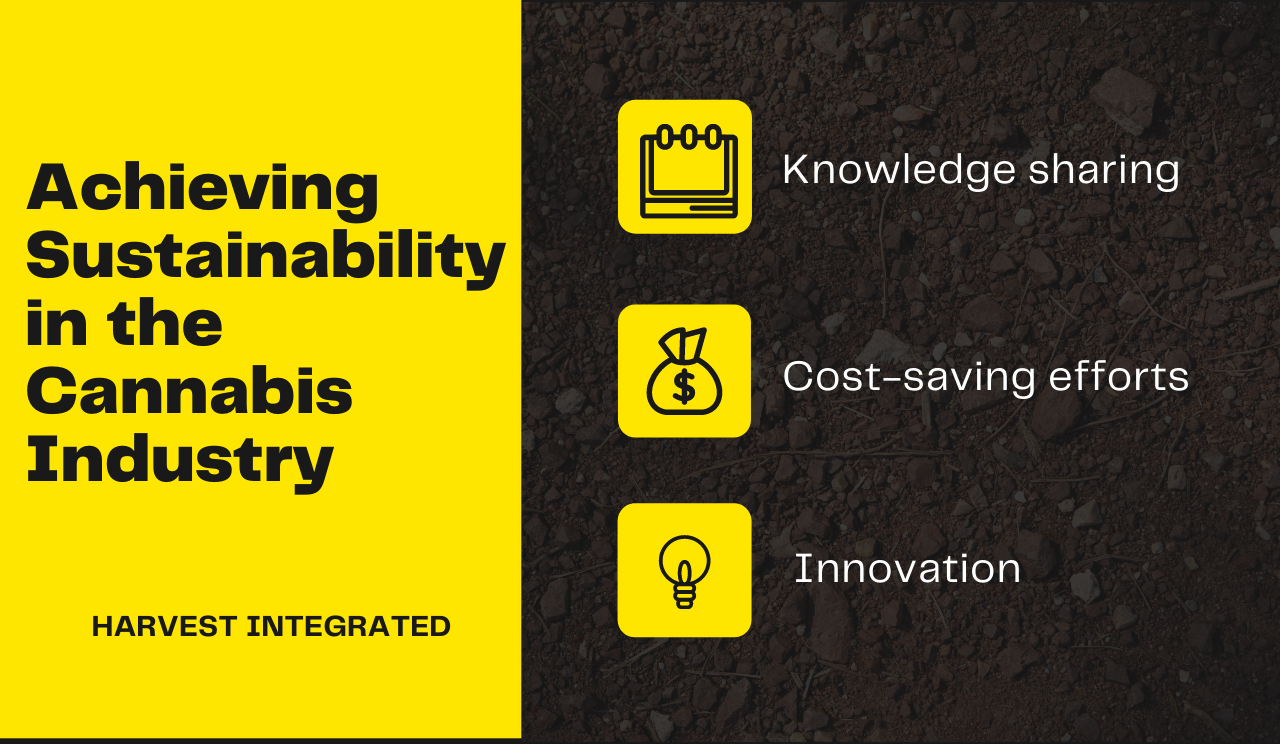There’s so much interest in the environmental impact of cannabis cultivation. But why? After all, the cultivation of just about any crop has an unavoidable influence on the environment.
It’s a fact that agriculture has an environmental impact, and reducing this impact is critical to maintaining environmental sustainability. However, cannabis is getting a lot of attention because of the general lack of systemic principles and policies towards sustainable cannabis cultivation.
The growth of the cannabis industry and its unprecedented legalization is only serving to complicate things further, making it even more crucial to assess and deal with the impact of cannabis on the environment.
The issues with cannabis cultivation
Although it’s often been cited as the ideal crop to cultivate owing to its decent margins, cannabis cultivation has long promoted concerns about many resources, from land to water and air. Now, concerns about energy use have come to the fore, leaving many people questioning the impact of growing cannabis. Let’s take a deeper dive into the various negative impacts surrounding the cultivation of cannabis.

High water demand
Cannabis is water-intensive. Although daily water use varies depending on elements such as geographic location, weather, soil properties and cultivation techniques, studies have shown that the water demand for cannabis is more than that of commodity crops such as rice, wheat, corn and soybean.
Unfortunately, with outdoor grows, the high water demand contributes to water pollution, which negatively affects ecosystems.
Water pollution
Cannabis cultivation, particularly illegal cultivation, is known to deteriorate water quality. Fertilizers and applied pesticides runoff or leach into water systems, adding contaminants into the groundwater, surface water and soil. All this not only poses a significant risk to the water environment, but it may also threaten human, crop and animal health, as well as food chains.
Air pollution
Air pollution from cannabis grows is increasingly a concern, particularly in densely populated areas with a lot of grow operations. The air pollution problem stems from cannabis terpenes.
Terpenes offer health benefits, however, they are among the more reactive, biogenic volatile organic compounds (BVOCs) released during cannabis cultivation and processing. Although many plants produce BVOCs – which are involved in plant growth and development, reproduction and defense – cannabis has been found to emit a significant amount of these compounds.
The main issue is that the presence of a large amount of terpenes in the air appears to worsen existing pollutants (such as ground-level ozone) that cause indoor air quality issues. Additionally, BVOCs are a precursor to ozone formation and could lead to an increase in ozone pollution.
High energy consumption
Outdoor cannabis grows enjoy some natural light and air. But things are different indoors. Growers don’t have natural sunlight and have to rely on equipment that mimics the natural conditions in the outdoors. Indoor grow lighting, heating, ventilation and air conditioning all require a lot of electricity, putting a bigger strain on energy sources compared to outdoor cultivation.
For example, growers constantly need to bring fresh air into grow rooms. The outside air needs to be treated so that it’s at the right temperature and humidity to promote crop growth and development. Since the air exchange rate in grow facilities is typically very high, the process of heating, ventilation and air conditioning is very energy-intensive.
Indoor cannabis grows use up to 100x more energy than other types of buildings. Even if we cut this number in two or three, the energy consumption of cannabis facilities would still be more intensive compared to restaurants, for example.
All this high energy consumption leads to greenhouse gas emissions and makes for a big carbon footprint.
Contribution to greenhouse gas emissions
Cannabis cultivation accounts for a notable amount of greenhouse gas emissions. For instance, indoor cannabis cultivation now accounts for around 1.3% of Colorado’s total greenhouse gas emissions. For some context, this is similar to emissions from coal mining in the state, which are around 1.8%.
As previously highlighted, a key concern with indoor cannabis growing is the energy use for heating, cooling, dehumidification and lighting. Energy production and usage are large sources of greenhouse gas emissions. It’s unsurprising then that in indoor grows, the largest sources of greenhouse gases are those that require the most energy – HVAC and grow lights.
Cannabis producers also use carbon dioxide supplementation to increase plant growth – this accounts for roughly 11%-25% of facilities’ greenhouse gas emissions.
Interesting fact: The contribution cannabis cultivation has on greenhouse gas emissions is a lot more in some regions than others. One US study found that there’s up to a 2.5x difference in emissions largely depending on a location’s weather.
Land cover changes
Though greenhouses and indoor grow facilities help prevent land cover changes, growing outdoors sometimes contributes to soil erosion. Outdoor cannabis cultivation can also contribute to forest fragmentation and deforestation, both of which worsen soil erosion.
In light of the environmental impact of cannabis cultivation, it’s imperative to make sustainability a key consideration of grow operations. Some of the impact areas highlighted above are not unique to just cannabis; they apply to farming in general. For example, farming generally releases large amounts of nitrous oxide and methane, two powerful greenhouse gases. Nonetheless, the growth of the cannabis industry and the increasing popularity of indoor grows necessitate action in the cannabis space.
Sustainable solutions for the cannabis industry
Working towards more sustainable cannabis cultivation begins with embracing more sustainable cultivation practices. Elements such as crop consistency, steady revenue and protection of the environment drive sustainability hence the challenge is to make cultivation as environmentally sustainable as possible while maintaining crop quality, profitability and operation success.
More sustainable growing practices
High resource use in cultivation facilities is one of the biggest causes of unsustainability. Addressing the factors that contribute to the resource use will go a long way in making cultivation practices more sustainable.
Can I at any time of the year shut down things such as the supplemental lighting? What can I do to improve the efficiency of the HVAC system? Are there opportunities for water reuse?
These are some of the questions you can ask as a starting point for your sustainability evaluation.

Understanding the root causes of sustainability issues is also important when looking at making growing practices more sustainable. Take water use for instance. Research conducted in partnership with New Frontier Data, an authority in business intelligence for the cannabis industry, has found that the regulated, legalized cannabis industry in California uses significantly less water than other major crops such as wheat, corn and cotton.
However, a lot of the growing that has been going on to date has been illicit, requiring a lot of resources to sustain.
The research estimates that the legal industry will grow by 214% to reach $41.5 billion in 2025 from $13.2 billion in 2019. On the other hand, the illicit industry is expected to decline to $64 billion in 2025, from $66 billion in 2019. The illicit industry is still thriving, but the growth of a legal industry should help improve sustainability.
Lastly, keeping up with developments in the industry when it comes to adopting sustainable growing practices is essential. Technologies such as precision irrigation could reduce water use, promote water reuse and improve water management. Similarly, HVAC systems that don’t rely on brute force to cool and dehumidify can help reduce energy use and increase efficiency.
More sustainable growing practices are also deeply ingrained in an understanding of the environmental impacts of cultivation and so the application of tools such as life cycle analysis will also help improve sustainability.
These are just a few instances where keeping up with what’s happening in the cannabis cultivation space can help you make more informed, sustainable decisions.
Need more sustainable growing practices? Check out “How to create a sustainable grow facility.”
Growing right
Proponents of outdoor cannabis growing favor being able to harness the sun’s natural power, thereby increasing energy efficiency and saving on electricity bills. But while the lower operational costs and resource use are good, outdoor grows come with their own distinct disadvantages. Crop quality and consistency are at risk in light of the increasingly extreme weather conditions. Improper water, soil and pest management may also induce environmental issues such as soil erosion and water pollution.

On the contrary, indoor cultivation gives growers full control over their grow environment and plants. There’s more shelter from nature’s hazards, crop quality is consistent, and yield is more predictable. It’s probably for this reason that indoor growing is growing. Already, over 40% of cannabis producers now grow exclusively indoors. But high costs, high energy demand, plus all the associated environmental implications constrain indoor cultivation.
Each growing method has its merits and drawbacks so one of the best ways to achieve sustainability is to focus on transitioning to more efficient growing models. For example, regenerative farming practices can compound the sustainability of cannabis cultivation. Furthermore, the use of efficient equipment can reduce the negative impacts of indoor cannabis cultivation.
Other options such as greenhouse growing can provide exceptional benefits and give growers the best of both worlds while accelerating sustainability. For instance, greenhouse growing operations can reduce greenhouse gas emissions by 42%. Hybrid greenhouses and sealed greenhouses are great solutions, giving growers the best of both indoor and outdoor growing, and helping save resources.
Learn more about “The case for sealed greenhouses.”
Looking into renewable energy options
For indoor grows, clean energy equipment that optimizes facilities’ lighting, heating, ventilation and air conditioning can go a long way in boosting sustainability. To date, some growers have begun using solar energy to keep the lights on and to cut operating costs and carbon emissions. Others are looking into wind energy as an energy source.
However, the cannabis industry’s energy appetite is high, and finding a good solution is much harder than it seems. Already, the energy demand in places like California is poised to surpass wind energy production in the state. It’s also difficult for many cannabis cultivators to achieve net-zero energy using solar power since the industry’s energy demand is so high.
A hybrid approach to energy may be the more sustainable solution, e.g combining renewable and non-renewable energy sources while working on increasing renewable energy sources and energy efficiency.
Going for efficiency
Some of the biggest contributors to cannabis cultivation sustainability are environmental impact, production and operational costs, crop quality, and efficiency. As such, one of the things that will increase sustainability in the cannabis space is efficiency.
Growers can achieve efficiency in several ways. Using efficient equipment is one way, for instance, while optimizing growing conditions and facility equipment is another. Introducing automation into the grow space will help improve efficiency as well.
Understand cannabis cultivation better for improved sustainability
The legal cannabis industry is new. Additionally, every operation is unique (think specialized grow room with specialized, efficient equipment vs. old warehouse with outdated equipment). Reducing the environmental impacts of cannabis cultivation and achieving sustainability requires a better understanding of the growing industry.

As governments regulate cannabis cultivation and the industry rides on the global wave of decriminalization, there’s an urgent need to better understand how cannabis impacts the environment.
Some cannabis growers and manufacturers have already begun to transition to more environmentally sustainable practices, but there’s still a lot of work to be done. However, things should become easier as the secrecy that has historically surrounded the industry lessens, and information becomes publicly available.
Cannabis legalization will also likely allow farmers to grow the crop in ways that are much more environmentally friendly. But there’s a need for more knowledge. For instance, some of the studies on the environmental impacts of cannabis production have not factored in the rise of more efficient equipment and its effect on things such as energy use, or the difference between legal and illicit grows.
Going forward, cost-saving efforts, innovation and increased knowledge sharing will help reduce the environmental impacts of cannabis cultivation and drive significant sustainability and efficiency.